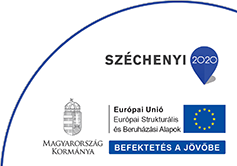
“The mind of a scholar, the eyes of a painter, and the heart of a poet is what we need at the same time”— wrote György Kepes. The artist’s motto very well reflects his oeuvre realised at the border of art and science, which we can experience here.
“My experiences are realised in the coexistence of my paintings and technical works.”
One of the most consistent figures implementing the holistic program of the Bauhaus, which aimed at terminating the antagonism of art and life, was György Kepes, who was born in Hungary, but spent most of his life in the United States. The spheres of the private (painting) and the communal (kinetic works) appeared as inseparable amalgam throughout his life, making no difference between his chosen media, techniques and art fields. György Kepes, the painter, photographer, graphic designer, interior designer, environmental artist, teacher, curator, editor and art theorist—even among his successes and failures— insisted on the power of art in shaping the society. In the centre of his experiments focusing on making the internal richness of life liveable stands the extension of sensation by the use of new media, as well as the interoperability of the fields of science and the fields of art. He had a prophetic sense of mission in believing that by the humane use of technology, the cooperation of the artist and the scholar, the connection he called “interthinking,” we can build a new and better world. It was the creative use of light he found to be one of the tools in art that can translate the dogmatism of scientific research into the language of emotions, also to enable the reinforcement of the social bonding of human beings. Light for Kepes was a medium enabling reflection of the spiritual heritage of archaic civilisations, as well as the latent components of the universe (the “new landscape” uncovering the visual correlations of the macro and micro cosmos) in the possible most abstract way. He did not consider, however, light to be the conceptual appropriation of the dynamism of the industrial civilisation, instead, used it also to draw attention on the necessity of the momentary, stable, unchanged things. The spiritual framework of his art philosophy consisted of the problem of the part and the whole, the dialectics of the opposites. It was due to this that in a symbolic meaning Kepes found his reflection in both mythological characters: in Antaeus, identified with painting, who gains new energy by touching the material world, the epidermis; and Daedalus, the craftsman and Jack-of-all-trades freed from all Earthly bounds, the archetype of the kinetic artist conquering the sky and the space. Kepes was interested in the experiences gained by seeing not only on the level of physiology, but also psychologically. Using the results of Gestalt psychology in art, researching the laws of optics, and the idea of denoting it as a universal language understandable for all, just like the music scores, represented the base for his educational activities. In its center stands the comprehension, that by the optimal visual environment can be realised by visual stimuli, appropriate correction of the modalities that shape the composition (rhythm, symmetry, proportions, patterns, etc). His theoretical writings are therefore penetrated by a structural principled ideology. According to Kepes, the artist’s task is to make art in which, from the visual syntagmas being parts of the composition, equilibria referring to the level of disorder, following the principles of entropy and negentropy can be created. Kepes believed that the artist interested in the 2 inversion of irreversible processes must become a constructor, who can create a new, more inhabitable environment on the ruins of the dystopia-burdened modern world. Referring to this, he worked out different proposals of previously unknown art forms possible to be created in the urban space, which can draw attention to the catastrophe of human activities affecting the ecosystems of the Earth, the negative effects of which are referred to as the anthropocene. Disapproving the elitist, consumer oriented concept of art dealing with works of art as objects of fetish, he invited and urged the creation of large art works created in collective workshops, which can be extended to entire cities. Kepes rejected the hegemony of the art market, watched the art world critically, nevertheless his lyric paintings and public art (enamel works, light walls and glass mosaic decorations in churches, libraries, banks), akin of the Informel and the Expressionist gesture painting of the New York School, but stylistically unclassifiable, introduce the viewers another world represented by the humanist artist. These works inviting to intimate togetherness and contemplation are, thanks to the unexpected colour contrasts and the tangible textures, paired with a specific metaphysical interpretation. The fertile conversation between the solid forms and the liquid material is manifested in Kepes’ fotograms renewing the language of photography, constructed of calligraphic signs.


Biography
György Kepes was born in 1907, in Selyp (now: Lőrinci) of North Hungary, as the child of a bailiff. In 1928 he graduated in Painting at the Fine Arts College, in the class lead by István Csók. As a member of the group of “New Progressives” (Új Progresszívek) created together with his classmates—among them Lajos Vajda, Dezső Korniss and Sándor Trauner—he participated with his paintings in several exhibitions in Budapest between 1928 and 1930. He joined the Work Circle (Munka-kör) organised around Lajos Kassák, worked in József Pécsi’s photo atelier, at Albert Kner, the graphic designer, and also visited Sándor Bortnyik’s private school, the Workshop (Műhely) often referred to as “the Hungarian Bauhaus”. Due to the narrow opportunities in the country, the wish to learn ways of expression more effective than painting, as well as his commitment to new image creating techniques he moved to Berlin in 1930 and continued to work in László Moholy-Nagy’s team. It was in Germany where he began working seriously with photography. He participated in Moholy-Nagy’s film experiments, in executing theatre sceneries, and as a graphic designer designed books for Mopr Verlag, publications of Schott & Gen. in Jena, and the covers of the magazine Neue Russland. In 1935 he attended the avantgarde art get-together in La Sarraz, Switzerland, which gave him the chance to meet Max Ernst and Paul Klee, among others. Following Moholy-Nagy’s call in the same year he moved to London, where he continued his work as graphic designer, and also became designer of the Simpsons of Piccadilly. As a member of the so-called Hampstead Avantgarde he met Herbert Read, Henry Moore, Barbara Hepworth, Ben Nicholson, and also tightened his relations to László Péri, Marcel Breuer and Walter Gropius, whom he already knew from Berlin. In the British capitol he made friends with several scholars including James Crowther and Conrad Hal Waddington. It was also in London where he met his later wife, Juliet Appleby. In 1937 it was again Moholy-Nagy, whose invitation Kepes accepted to lead the Department of Light and Color in the New Bauhaus in Chicago. Kepes had an unimpeachable role in the reorganisation of the school renamed as School of Design in 1938. Parallel to his educational 3 activities, he kept lectures by the request of the Chicago Area Directors’ Club, which served as a starting point for his book Language of Vision published in 1944. Kepes’s first solo show was arranged by Katharine Kuh’s gallery in Chicago. He designed the installation of several epoch-making shows (for example The Art of the United Nations, in1944) at the Chicago Art Institute. During the war he led seminars on the technique of the camouflage to students, artists and military officials, and elaborated solutions to camouflage potential targets in Chicago, as well as to deceive pilots of the enemy. After getting across Moholy-Nagy in 1943, he left the school, and found employment as teacher at the North Texas State College in Denton, and at the Brooklyn College in New York. In 1946 he accepted an invitation to be the professor to teach visual planning at the School of Architecture and Planning at the Massachusetts Institute of Technology (MIT) in Cambridge, MA. From 1949 he began a collaboration first with Carl Koch, later with Pietro Belluschi and Walter Gropius to design murals and glass windows for public buildings, schools and churches. In the same year, together with his wife, Kepes designed the so-called Fun Room, a functional room for their daughter, which was published by Life magazine, among others. In 1951 Kepes organised his exhibition entitled The New Landscape in Art and Science, which had a great effect. The visuals of this exhibition was published five years later under the same title, including commentaries by scholars and artists. In 1952 he was elected member of the American Academy of Arts and Sciences. In 1954 he received the Rockefeller Foundation Grant to carry out the study Perceptual Form of the City in cooperation with Kevin Lynch. In 1959 he received the Guggenheim Foundation Fellowship to finish his research Light as a Creative Medium, the results of which were made public in 1965 at his exhibition at the Harvard University Carpenter Center for Visual Arts. It was in the same year that the programmed kinetic light wall of the KLM Airlines New York ticket office was executed after his plans. From 1965 he began editing the six-plus-one-volume book series Vision + Value dealing with social and natural science research, architecture and the psychology if seeing. In 1967, following the preparatory work of several years, he founded the Center for Advanced Visual Studies (CAVS) at the MIT, to enable working on environmental and social problems of the society in cooperation with artists, scholars and engineers he selected. Until his retirement in 1974 he served as Director of the Center, and until the end of his life remained in close contact with the CAVS fellowship holders and the new director of the Center, Otto Piene. Thanks to this he participated the 6th Kassel Documenta in 1977 and the 1980 Ars Electronica Festival in Linz. György Kepes died in 2001 at home in Cambridge, MA.
Márton Orosz PhD
 Kepes institute
Kepes institute


